Hawker Siddeley HS 748
| HS 748 | |
|---|---|
 | |
| West Air Sweden HS 748 Srs2/244 | |
| Role | Airliner |
| Manufacturer | Avro Hawker Siddeley Hindustan Aeronautics |
| First flight | 24 June 1960 |
| Status | Active service |
| Primary users | Indian Air Force Indian Airlines Corporation Air North VARIG |
| Produced | 1961-1988 |
| Number built | 380 |
| Variants | Hawker Siddeley Andover BAe ATP |
The Hawker Siddeley HS 748 is a medium-sized turboprop airliner originally designed by the British firm Avro in the late 1950s as a replacement for the aging DC-3s then in widespread service as feederliners. Avro concentrated on performance, notably for STOL operations, and found a dedicated market. 380 aircraft were built by Hawker Siddeley. A larger, stretched development of the HS 748, the BAe ATP, attempted to compete with the de Havilland Canada Dash 8 but saw a limited production run.
Development

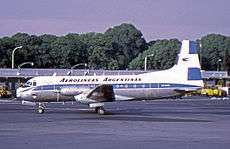
The original 748 design was started in 1958, after the infamous Duncan Sandys 1957 Defence White Paper ended most military manned-aircraft development in the UK, and Avro decided to re-enter the civilian market.
The Vickers Viscount had the larger end of the short-haul market, and Avro therefore decided to design a smaller regional airliner powered by two Rolls-Royce Dart turboprop engines, intended to replace the many DC-3 Dakotas that were by then reaching the end of their economic lifespan. Original plans were for a 20-30 seat aircraft with a similar configuration to the Fokker F27, but talks with potential customers soon led to a low-wing 40 seat design being chosen for the 748 project.
Avro was not the only company to see the potential for a DC-3 replacement, and by this point work on the 748's direct competitor, the Fokker F27 Friendship turboprop, was well advanced. Avro therefore decided to compete by producing a more rugged design with better short-field performance, allowing it to operate from smaller airports and those with rough surfaces. This was accomplished with a long, high lift wing and a unique single slot flap with a hinged flap tab at the trailing edge. The wing was mounted low on the fuselage with dihedral from the root, allowing good overall ground clearance and easy mounting of strong durable landing gear. Other features of the 748 included an internal engine starting system, and systems and structures that were designed to be easy to inspect and repair in the field with limited equipment. The 748 was one of the first medium-sized aircraft to use fail-safe design principles in the structure, instead of the then common safe-life principles. Because of these features, the 748 quickly became popular (and still is today) with a variety of airlines operating in remote areas thanks to its ability to haul payloads of over 10,000 lbs in and out of short rough fields with little to no ground service equipment.
The first Avro 748 flew from the company's Woodford, Cheshire aircraft factory on 24 June 1960, and testing of the two prototypes quickly proved the type's short-field performance. 18 Avro 748 Series 1 aircraft were produced, the first for Skyways Coach-Air being delivered in April 1962. However, the majority of the series 1 were delivered to Aerolíneas Argentinas. By this point, Avro's individual identity within the Hawker Siddeley Group had ended and the design became known as the HS 748.
After the initial batch of series 1 aircraft production switched to the series 2, which was similar to the series 1 but with more powerful RR Dart RDa 7 Mk 531 engines and increased gross weight. In 1967 the series 2A was introduced which, again, was the same basic aircraft but with Mk. 532 engines and a further increase in gross weight. From 1971 on, a large freight door in the rear cabin and strengthened cabin floor were offered as options on the Srs 2A. In 1979 the Series 2B was introduced, which featured a 4-foot increase in wingspan at the tips, Mk 536-2 engines, a modernized passenger cabin, and improvements to the fuel, water methanol injection system, and engine fire protection systems.
In 1972, a Hawker Siddeley 748 was one of the last planes to be flown by noted aviator Howard Hughes. He took part in several flights, accompanied in the cockpit by Hawker Siddeley test pilot Tony Blackman, and taking off from the company's airfield at Hatfield.[1]
The 748 Series 1 and Series 2 were also licence-produced in India by Hindustan Aeronautics (HAL) as the HAL-748. HAL built 89 aircraft in India, 72 for the Indian Air Force and 17 for the Indian Airlines Corporation. Hawker Siddeley also used the HS 748 as the base for their HS 780 Andover, a transport aircraft built for the Royal Air Force. The HS 780s were essentially 748s but with a redesigned rear fuselage and empenage which included a large rear loading ramp and a squatting main landing gear to allow fast and easy loading of large freight items.
Production of the HS 748 ended in 1988, by which time 380 were produced (including the Andover and HAL-748).
Typical passenger seating in the HS 748 is for 40-48 economy class seats (4 abreast), however most passenger HS 748s still in service are operated as quick change combis, with a movable bulkhead dividing the main cabin two, with anywhere from 4 to 40 seats in the rear section and cargo in the forward section. The 748 is also widely used as a pure freighter with a typical max payload of about 12,000 lbs. Several carriers also use the 748 as a bulk fuel hauler, with either seven or eight fixed tanks in the cabin with a total capacity of about 7500 litres (2000 US Gallons).
The ICAO designator as used in flight plans is A748.
The basic price for a new Avro 748 Series 1 in 1960 was £176,000, with the corresponding Avro 748 Series 2 being £196,000.[2]
Variants
- 748 Series 1 – The original Avro 748 twin-engined short / medium-range airliner, powered by two Rolls-Royce Dart RDa 7 Mk 514 turboprop engines. 24 were built.
- 748 Series 2 – The Series 2 entered production in 1961 with a higher take-off weight and Mk 531 engines. 111 were built.
- 748 Series 2a – The more powerful Series 2A followed in 1967, with a further increase in take-off weight and Mk 532 or 534 engines. 157 built, making the 748 one of the more successful British airliners and the 2A the most popular variant.
- 748 Series 2b – The main production model after Hawker-Siddeley was absorbed by British Aerospace, the 2B featured a 4-foot increase in wingspan over previous models, a further increase in weights, Mk 536 engines, a modernized cabin, and several systems improvements. 28 built.
- Super 748 – Basically the same as the 2B but fitted with hush kits on the engines. 8 Built.
- Hawker Siddeley HS780 Andover – Modified version of the 748 design for the Royal Air Force. Fitted with kneeling undercarriage, raised tail unit and rear loading ramp.
| Hi-res cutaway of BAe Coastguarder | |
|
|
- Coastguarder – A maritime patrol version.
- 748 Andover – Military passenger transport versions of the 748.
- HAL 748 – Licence production by Hindustan Aeronautics Limited at Bangalore India. Indian aircraft were later modified for a variety of roles including a trials aircraft for an Airborne Early Warning version fitted with a large radome, known as the Airborne Surveillance Platform (ASP). A total of 89 HAL 748's were built.
- HAL 748 Series 2M – Production for the Indian Air Force (the last 20 built) were Series 2M aircraft with a large freight door.
Accidents and incidents
- On 10 July 1965, Avro 748-101 Series 1 G-ARMV of Skyways Coach-Air was written off in a landing accident at Lympne Airport. All 51 people on board survived. This was the first accident that resulted in a write-off on an Avro 748 / HS748.
- On 15 August 1967, two accidents involving HS-748-222 Series 2 aircraft of Channel Airways Limited, occurred roughly 90 minutes apart at Portsmouth Airport. In the first incident, G-ATEK, operating a scheduled service from Southend to Paris, via Portsmouth, landed in rainy conditions and was unable to stop in the available distance on the grass runway; the aircraft slid sideways, left the runway and stopped on top of an embankment. A little over an hour and a half later, aircraft G-ATEH, operating a scheduled service from Jersey, via Guernsey to Portsmouth, landed and slid on the runway, crashed through a perimeter fence and came to rest on the main Eastern Road. There were no injuries in either accident, but both aircraft sustained serious damage. An AIB investigation[3] reported that "both accidents were caused by inadequate braking which had resulted from the extremely low coefficient of friction provided by the very wet grass surface over the hard, dry and almost impermeable sub-soil".
- On 4 February 1970, Aerolíneas Argentinas Flight 707, an Avro 748-105 crashed into the ground after the pilots lost control of the aircraft. The aircraft crashed at Loma Alta, Argentina and killed all 37 passengers and crew on board.
- On 9 December 1971: Indian Airlines - A Hawker Siddeley HS 748, near Chinnamanur was descending into Madurai when it flew into high terrain about 50 mi (80 km) from the airport, killing the four crew members and 17 passengers. Fortunately there were ten survivors. The accident occurred in reduced visibility during daylight hours.[4][5][6]
- 20 January 1976 – a TAME Hawker Siddeley HS 748-246 Series 2A registration HC-AUE crashed while flying over mountainous terrain at 10,000 feet. The aircraft struck trees with its right wing, lost control and crashed into the side of the mountain. The plane was en route from Loja to Simón Bolívar International Airport in Guayaquil, Ecuador. Six crewmembers and 28 passengers were killed while eight passengers survived the accident.
- 3 March 1978 - Línea Aeropostal Venezolana Hawker Siddeley HS 748 crashes on departure from Simón Bolívar International Airport, Venezuela, all 46 on board are killed.
- 7 September 1978 – Air Ceylon HS 748 4R-ACJ destroyed by fire while parked at Colombo-Ratmalana, resulting from detonation of bomb placed on board by terrorists. There were no fatalities.
- 31 July 1979 at Sumburgh Airport in the Shetland Islands,Scotland; Dan-Air Flight 0034, a Hawker Siddeley 748 series 1 (registration G-BEKF) operating an oil industry support flight crashed. The aircraft failed to become airborne and crashed into the sea. The accident was due to the elevator gust-lock having become re-engaged, preventing the aircraft from rotating into a flying attitude. The aircraft was destroyed and 17 persons died from drowning
- 22 August 1979 – An aircraft mechanic (a former non-commissioned officer of the Colombian Air Force) stole a military HS 748 (FAC-1101) from a military hangar at the Eldorado International Airport in Bogotá, Colombia. According to the news, this person stole the aircraft with the intention of crashing it against his parents' house. After some minutes in the air, it ran out of fuel and crashed, killing the impromptu pilot and three more people on the ground.[7]
- On 26 June 1981, Dan-Air Flight 240 an HS748 2A mail flight from Gatwick Airport to East Midlands Airport crashed at Nailstone killing the three (3) crew members on board. While descending, the right-hand rear door detached, struck the horizontal tail plane and became lodged on the leading edge. Control was lost, and the aircraft entered a steep dive. During the dive, the wings and tail plane failed due to overstressing.
- On 19 August 1981, Indian Airlines Flight 557, operated by HAL 748 VT-DXF overshot the runway at Mangalore-Bajpe Airport in wet weather. The aircraft came to a halt just beyond the runway edge. While there were no fatalities the aircraft damaged beyond repair and was written off. One of the passengers on board was Veerappa Moily ex - Cabinet Minister for Law, Justice and Company Affairs in the Government of India.[8][9]
- 11 October 1983 – Air Illinois Flight 710 carrying 10 people crashed at night in a thunderstorm between Pinckneyville and Tamaroa, IL. The flight originated at Chicago's Meig's Field and had stopped at Springfield, IL. A transcript revealed that the left generator had failed after takeoff and the first officer had mistakenly isolated the right generator. Attempts to restore the right generator were unsuccessful for undetermined reasons. The captain elected to continue to the destination rather than return to the nearby airport. The cloud base was at 2000 feet MSL, but ATC could not provide an IFR below 3,000 feet just before the crash. The crew indicated a total loss of electrical power. The left generator drive shaft had sheared.[10] All 50 passengers and crew on board were killed.[11]
- 27 June 1987 – Philippine Airlines Flight 206 crashed onto a mountain after poor visibility hampered the pilot's attempt to land at Loakan Airport in Baguio City, Philippines. All 50 passengers and crew on board were killed.
- 29 April 1995 – Sri Lanka Air Force Avro 748 CR835 a HS 748 serial CR835 (4R-HVB) was hit by an SA-7 missile filed by the LTTE while on approach to Palaly/KKS/Jaffna. All 52 occupants on board were killed.[12]
- On 11 January 1999, ASTE HAL-748 ASP/H-2175, an HAL 748 crashed into the ground after the pilots lost control of the aircraft. The aircraft crashed at Attur, Tamil Nadu, India and killed all 6 scientists and the 2 pilots on board.
- 5 September 1999 - Necon Air Flight 128 from Pokhara to Kathmandu, an BAe 748-501 Super 2B (9N-AEG), collided with a communication tower of Nepal Telecommunication Corporation and crashed in a wooded area 25 km west of Kathmandu, while approaching Tribhuvan International Airport. All 10 passengers and 5 crew were killed.[9]
- 1 June 2002[13] – Former South African cricket captain Hansie Cronje's scheduled flight home from Bloemfontein to George had been grounded, so he hitched a ride as the only passenger on a cargo flight in an HS 748. Near George airport, the pilots lost visibility in cloud, and were unable to land, partly due to unserviceable navigational equipment. While circling, the plane crashed into the Outeniqua mountains northeast of the airport. Cronje, aged 32, and the two pilots were killed instantly. An inquest by South Africa's High Court reached the conclusion that "the death of the deceased Wessel Johannes (Hansie) Cronje was brought about by an act or omission prima facie amounting to an offence on the part of pilots."[14][15] However, with Cronje's involvement in match-fixing, theories that Cronje was murdered on the orders of a cricket betting syndicate have flourished since his death.[16]
- 12 June 2012[17] - A Wasaya Airways Hawker-Siddley 748 caught fire during ground operations at Sandy Lake First Nation in Northwestern Ontario. No injuries were reported. The aircraft burned to the ground. The left wing and nacelle survived.
- 17 February 2014 - an HS 748-371 LFD Srs 2B crash landed at Rubkona airport in South Sudan killing one crew member and injuring the other three. There were only four people on board the cargo plane which was carrying humanitarian Aid to South Sudan.[18]
- 14 November 2014[19] - A BAe HS-748 turboprop aircraft crashed on final approach to Panyagor airstrip in South Sudan, killing two crew members and seriously injuring a third crew member. The cargo plane was on a charter flight for the Lutheran World Federation and carrying relief supplies from Juba, South Sudan.
Operators
Civil operators
As of July 2013 a total of 22 HS 748 aircraft (all variants) remained in airline service. Current operators are:[20]
- 748 Air Services (1)
- Air Creebec (2)
- Air Inuit (2)
- Air North (5)
- Avro Express (1)
- Bismillah Airlines (4)
- Calm Air (1)
- CHC Stellavia (1)
- East Horizon Airlines (1)
- Planes For Africa (1)
- Safe Air Company (1)
- Stars Away Aviation (1)
- Wasaya Airways (3)
Former civil operators
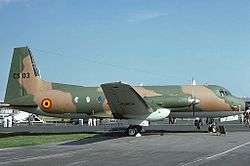
 Botswana
Botswana
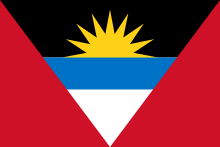 Antigua & Barbuda
Antigua & Barbuda
 Argentina
Argentina
 Austria
Austria
 Bahamas
Bahamas
 Brazil
Brazil
- Varig (11) [one Avro 748 Series 2 prototype and 10 production aircraft]
 Canada
Canada
- Air Gaspé
- Air Manitoba
- Austin Airways
- First Air (9)
- Quebecair
- West Wind Aviation
 Cape Verde
Cape Verde
 Colombia
Colombia
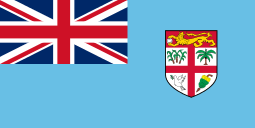 Fiji
Fiji
- Fiji Airways (now Air Pacific)
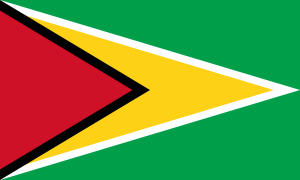 Guyana
Guyana
- Guyana Airways (now defunct)
 Indonesia
Indonesia
- Bali Air (now defunct) (4)
 India
India
- Vayudoot (now defunct)
- Indian Airlines (now Air India)
 Ireland
Ireland
- Ryan Air (2) 1986-1989 Inaugurating the Dublin-London (Luton) Service
 Malawi
Malawi
 Marshall Islands
Marshall Islands
 Mexico
Mexico
- Aeromexico
- Aerocaribe (1) (Bought From Atlantic Airlines de Honduras)
 Nepal
Nepal
 New Zealand
New Zealand
 Philippines
Philippines
 Portugal
Portugal
 Samoa
Samoa
 South Africa
South Africa
Air Cape SOUTH AFRICA {SAFMARINE} {regZS-JAY}
 Sri Lanka
Sri Lanka
- Aero Lanka (1)
- Air Ceylon (2)
- Lionair (1)
 Thailand
Thailand
 Trinidad and Tobago
Trinidad and Tobago
- Trinidad and Tobago Air Service (TTAS)
 United Kingdom
United Kingdom
 United States
United States
- Air Illinois
- Air Virginia (AVAir)
- Cascade Airways
 Venezuela
Venezuela
 Zambia
Zambia
Military operators
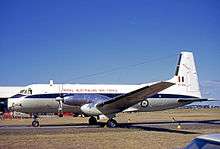
 Australia
Australia
- Royal Australian Air Force
- School of Air Navigation RAAF/No. 32 Squadron RAAF – aircraft operated in navigation trainer configuration between 1968–2004
- No. 34 Squadron RAAF – aircraft operated in VIP configuration between 1967–1996
- Royal Australian Navy
- Fleet Air Arm (RAN) – operated between 1973–2000
- No. 723 Squadron RAN
- No. 851 Squadron RAN
- Fleet Air Arm (RAN) – operated between 1973–2000
.svg.png) Belgium
Belgium
- Belgian Air Force (Three operated from 1976, sold in 2001–2002 to Benin and replaced by four Embraer Regional Jets)
- 21 Squadron
 Benin
Benin
 Brazil
Brazil
- Brazilian Air Force
- Twelve aircraft operated between 1962–2005.
 Brunei
Brunei
 Burkina Faso (
Burkina Faso ( Upper Volta)
Upper Volta)
 Cameroon
Cameroon
- Cameroon Air Force – Retired
 Colombia
Colombia
 Ecuador
Ecuador
 India
India
- Border Security Force Air Wing
- Indian Air Force : BH-572 Used by HAL (Hindustan Aeronautics Limited) Chairman
- Indian Air Force : On 25 November 2012, IAF announced the impending replacement and phasing out of the old Avro aircraft
 Madagascar
Madagascar
 Nepal
Nepal
 South Korea
South Korea
- Republic of Korea Air Force: First introduction Time : April, 1974.
 Sri Lanka
Sri Lanka
 Tanzania
Tanzania
 Thailand
Thailand
 United Kingdom
United Kingdom
 Venezuela
Venezuela
- Venezuelan Air Force
- Venezuelan Navy - Former operator.
 Zambia
Zambia
Specifications (Super 748)
Data from Jane's Civil and Military Aircraft Upgrades, 1994–95[22]
General characteristics
- Crew: Three (two pilots + one passenger attendant)
- Capacity: 40–58 passengers
- Payload: 11,323 lb (5,136 kg)
- Length: 67 ft 0 in (20.42 m)
- Wingspan: 102 ft 5½ in (31.23 m)
- Height: 24 ft 10 in (7.57 m)
- Wing area: 829 ft² (77 m²)
- Empty weight: 27,126 lb (12,327 kg)
- Max. takeoff weight: 46,500 lb (21,092 kg)
- Powerplant: 2 × Rolls-Royce Dart RDa.7 Mk 536-2 turboprop, 2,280 ehp (1,700 kW) each
Performance
- Cruise speed: 281 mph (244 kn, 452 km/h)
- Range: 1,066 mi (926 nmi, 1,715 km) (with max payload)
- Service ceiling: 25,000 ft (7,620 m)
- Wing loading: 56.1 lb/ft² (274 kg/m²)
- Power/mass: 0.0981 hp/lb (0.161 kW/kg)
Survivors
- Avro 748 Srs 1 G-BEJD, c/n 1543 is preserved with the Speke Aerodrome Heritage Group at Liverpool John Lennon Airport, United Kingdom.[23]
- Avro 748 G-BVOV, is preserved underwater at the Capenray Diving Center near Carnforth.
See also
- Related development
- Aircraft of comparable role, configuration and era
- Convair CV-240 family
- Fairchild Hiller FH-227
- Fokker F27
- Handley Page Herald
- NAMC YS-11
- Saab 340
- Grumman Gulfstream I
- Related lists
References
- ↑
- Blackman, Tony. Flight Testing to Win. Lulu.com, 2005, p. 265.
- ↑ http://www.flightglobal.com/pdfarchive/view/1960/1960%20-%202661.html
- ↑ http://www.aaib.gov.uk/cms_resources.cfm?file=/1-1971%20G-ATEK%20and%20G-ATEH.pdf
- ↑ http://www.manoramaonline.com/cgi-bin/MMOnline.dll/portal/ep/malayalamContentView.do?contentId=12809155&tabId=4&BV_ID=@@@
- ↑ http://www.bharat-rakshak.com/1971/Dec09/index.html
- ↑ http://www.hwh22.it/xit/S02_documenti/doc_aercrash.html#1971
- ↑ "FAC-1101 Newspaper report". elespectador.com News Website. 23 August 2009. Retrieved 23 August 2009.
- ↑ "Moily's close shave in Mangalore 30 years ago". The Hindu. 22 May 2010.
- ↑ "description". Aviation Safety Network. Retrieved 22 May 2010.
- ↑ "The Crash of Flight 710". DuQuoin.com. Retrieved 5 Jan 2011.
- ↑ ASN Aircraft accident Hawker Siddeley HS 748
- ↑ "Sri Lanka, since 1971". ACIG Journal. 29 October 2003. Retrieved 30 October 2008.
- ↑ "Report of SZ-OJU, which occurred on 1 June 2002". South African Civil Aviation Authority. Retrieved 8 August 2008.
- ↑ Cronje inquest opens
- ↑ Pilot error caused Cronje crash
- ↑ Did a cricketer kill Woolmer?
- ↑ "Plane destroyed in Northwestern Ont. fire". CBC News.
- ↑ "ASN Aircraft accident Hawker Siddeley HS-748-371 LFD Srs 2B 5Y-HAJ Rubkona Airport". 17 February 2014. Retrieved 18 February 2014.
- ↑ http://www.voanews.com/content/south-sudan-plane-crash-lutheran-world-federation-aid/2520399.html
- ↑ "2013 World Airliner Census", pp. 47-48.
- ↑ 1966 Pathé Newsreel retrieved at https://www.youtube.com/watch?v=bZrZTD9jxP0
- ↑ Michell, Simon (editor) (1994). Jane's Civil and Military Aircraft Upgrades, 1994–95. Jane's Information Group. ISBN 0-7106-1208-7.
- ↑ "Avro 748 moves to Liverpool". Aeroplane. Cudham: Kelsey Publishing (January 2012): 11. ISSN 0143-7240.
- "World Airliner Census". Flight International, Volume 184, Number 5403, 13–19 August 2013, pp. 40–58.
External links
| Wikimedia Commons has media related to Hawker Siddeley HS 748. |